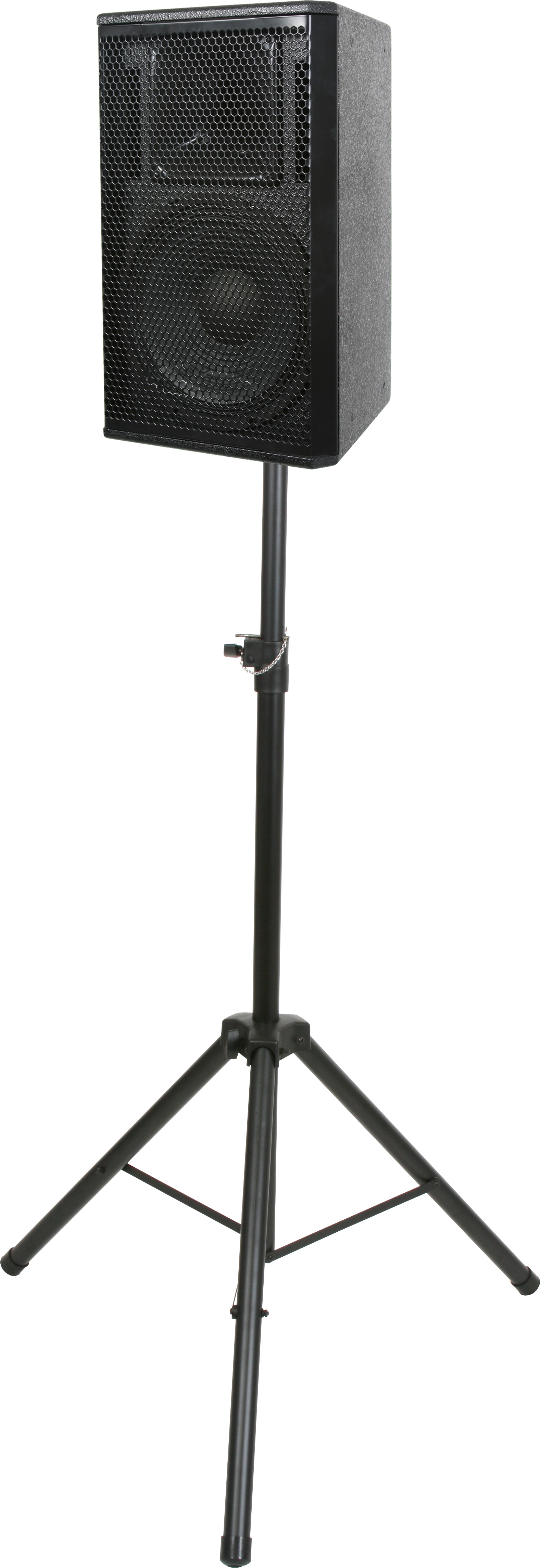

So it's better to actually try it out in the actual position that the speaker is in. Depending on the speaker, the floor, the room it's placed in. And in different scenarios it provides different results. In our testing we did a lot of research trying to figure out which way to go here, but what we kind of found out is that it's different. But is any one of these school of thoughts better than the other one? So, in one of them you can either bolt them or use spikes. And if they're heavy enough that means they won't. It makes sure that the speaker can't move relative to the stand so they both kind of move together. One thing I would like to add is that You can also use spikes and from an acoustic point of view using spikes is basically similar to bolting the speaker to the stand. So two school of thoughts and you could go either way? Like directly on the table or something like that. That's a different way of doing it which works better if you don't have a heavy stand or if you have it placed on something that is not heavy enough. The other way is you could use some kind of rubbery material some soft material to decouple it from the stand so that when the speaker is playing it won't actually make the stand move.

So it should fill the stand with sand or lead. That's a good way of doing it, provided the stand is actually heavy enough. You could say that if you actually bolt the speaker to the stand you make sure that if the stand is heavy then the speakers won't be able to move the stand, in turn the speaker won't move. Again, you have two schools of thought here. And they want to know if the material that you put between the stand and the speakers, if that actually matters and makes a difference. Otto, the first question is from Andreas and David. Okay, and with that said I think that we should start jumping into the questions from you guys, so let's go. No it needs to have something firm that doesn't add any distortion to the sound. Not the floor, not your table, not whatever. So you want to only hear the speaker, not whatever it's placed on. The second one is whatever the speaker is placed on, if that's actually playing along with the speaker, when the speaker is moving the woofer in the speaker is moving, you don't want something to vibrate along with the speaker. You also want to be able to adjust that position because rooms are different, speakers are different, so the actual position in your room will vary. The first one, the most important thing actually, is to place the speaker in the room. Yes, actually the stand for a speaker serves two purposes. But before we jump into all of the user questions, I would really like it if you could give us a quick reason why stands actually matter. And Otto you're a product manager here at Dynaudio.

On this episode of Ask the Expert, our product manager, Otto Jørgensen, drops by to stop to talk about stands.
Speaker stands full#
Below you'll find the full transcript of our conversation with Otto. Oh, so you prefer reading? That's not a problem. If you have any more questions, please share them with us - and the rest of our community - on our Facebook page or directly in the comment section on YouTube. We want to give a big thanks to all of those who posted questions. Unfortunately, we can only steal our experts away for a short amount of time, so we haven't been able to answer each and every one of the great questions we received. As we did last time, we'll make sure keep an eye out for any interesting questions to bring to the next episode of Ask The Expert. Five quick questions by Davidson Home Audio, Florian Oeing, Francis Pulanco, Sean Gonzales, Yuen Hee Lee.



 0 kommentar(er)
0 kommentar(er)
